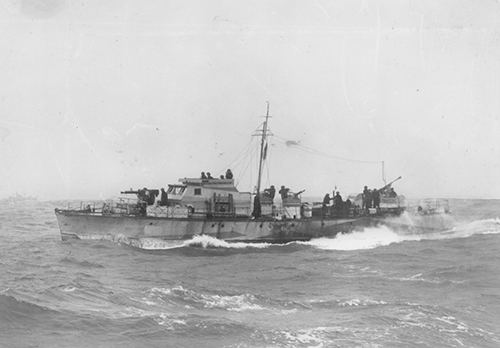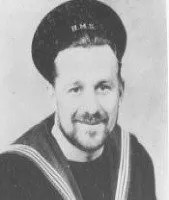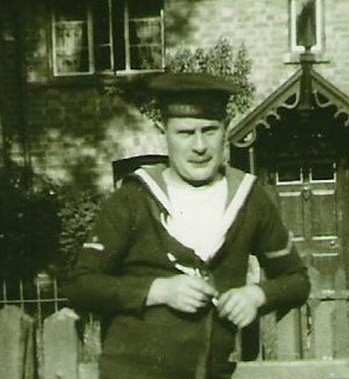
OPERATION CHARIOT – THE GREATEST COASTAL FORCES RAID OF ALL
Operation Chariot was the name given to the daring raid on St Nazaire 28 March 1942. 144 men were killed, 215 were captured and 271 made it home. Below, we will focus on the stories of three men who were onboard the Fairmile C Motor Gunboat MGB 314: Robert Ryder, William Savage and Dick Stephens but first…
Why did the raid take place?
The German battleship Tirpitz presented a major threat to the Atlantic Convoys which were a vital lifeline to Britain throughout the war. As part of the wider damage limitation strategy, a plan was devised to destroy the only dock on the French Atlantic coast capable of taking her: St Nazaire. With that neutralised, Tirpitz would be limited to operations in the North Sea. The problem was that the Germans knew this and the port was very heavily defended as a result. The plans for Operation Chariot were generally regarded as suicidal and gained little support from the RAF or the Navy. Eventually, bowing to political pressure, the Navy allocated the obsolete destroyer HMS Campbeltown as the ‘bomb ship’, but instead of escorting her with destroyers and frigates, 18 Coastal Forces motor gunboats were allocated to the task.
What was the plan?
The flotilla was to sail from Falmouth, transit under cover of darkness some six miles up the Loire estuary into the harbour, where on a spring high tide, Campbeltown would ram the dock gates at full speed. A contingent of Commandos would land and cause havoc before delayed explosives in the ship detonated, flooding the dock. The Commandos would then board the gunboats and return home. The RAF eventually agreed to provide a token force of aircraft to cause a distraction, but they were worried about killing innocent French civilians.
What happened?
Amazingly, the force got almost to the dock gates undetected. Perhaps the Germans did not quite believe that something so foolhardy would be attempted? The RAF did turn up, but instead of creating a diversion, they attracted attention to the ships. A remarkable team onboard Campbeltown successfully impaled her on the dock gate and the Commandos streamed ashore under heavy German fire. The wooden gunboats, with no protection and limited firepower against the heavy shore guns and half full of petrol, took a beating. They had to get very close in to have any effect – massively increasing the risk to themselves. Of twelve allocated to landing Commandos, only three made it to the dockside. Nonetheless, enough men made it ashore to cause the intended havoc and destroy the pumping stations for the dock gate (they had practised at Southampton’s KG5 dock). By the time they came to withdraw, most of the gunboats had already been destroyed or were badly damaged. A small number managed to get onboard the ships, a tiny number managed to evade the Germans and got home one way or another, the remainder were killed or captured. Only three gunboats made it back to England. The explosives aboard Campbeltown detonated at 1130 local the following morning, completely destroying the dock gate and putting it out of action until 1947.
You can read more about Op Chariot in this excellent website run by the St Nazaire Society: Index

MGB 314, a Fairmile C 110ft MGB built in North Wales in 1941, was the Command platform for the operation. She was the most heavily armed gunboat in the raid and selected to host the Force Commanders. This was due in part to her seasoned crew, who had been involved in special operations work since coming out of build. Her commanding officer, Lieutenant Dunstan Curtis was an RNVR officer who was awarded the DSC and the Croix de Guerre for this operation. Amazingly, MGB 314, having been in the vanguard of the flotilla as they approached the dock and was the last to leave, made it almost out to sea when she came across an armed trawler which opened an uncomfortable heavy, but not very accurate fire. This slowed their progress and even as they got clear of the searchlights, splinters from one of the very last shells fired from ashore killed the forward gun crew.
There were 24 naval personnel onboard. Between them they were awarded two Victoria Crosses, three DSCs, four DSMs and two Mentioned in Despatches.
Three ordinary men doing extraordinary things

The Naval Force Commander onboard MGB 314, Robert Ryder had joined the RN in 1926 and qualified as a submariner, serving in the Far East.
In 1933 he captained the ketch Tai-Mo-Shan on a 17000-mile voyage from Hong Kong back to Dartmouth, conducting intelligence gathering against the Japanese on the way. The yacht became the first vessel to belong to the Royal Naval Sailing Association.
He was appointed Force Commander for Operation Chariot and embaked in MGB 314 with a small staff. They led from the front. Once HMS Campbeltown was impaled on the dock, he remained on the spot coordinating operations and evacuating men for another 90 minutes. MGB 314, now full of dead and wounded, somehow managed to withdraw to safety although she was scuttled before she could reach English shores.
Ryder was awarded the Victoria Cross for Op Chariot. This is his citation:
For great gallantry in the attack on St Nazaire. He commanded a force of small unprotected ships in an attack on a heavily defended port and led HMS Campbeltown in under intense fire from short range weapons at point blank range. Though the main object of the expedition had been accomplished in the beaching of Campbeltown, he remained on the spot conducting operations, evacuating men from Campbeltown and dealing with strong points and close range weapons while exposed to heavy fire for one hour and sixteen minutes, and did not withdraw till it was certain that his ship could be of no use in rescuing any of the Commando troops who were still ashore. That his Motor Gun Boat, now full of dead and wounded, should have survived and should have been able to withdraw through an intense barrage of close range fire was almost a miracle.
After the war he became a member of Parliament, helped run the RNLI and died peacefully aged 78 whilst sailing his yacht.

William Savage worked in the brewery at Smethwick, Staffordshire. He joined the Navy in December 1939 and served as an Able Seaman in MGB 314 for Operation Chariot, the raid on St Nazaire – dubbed ‘the greatest raid of all’. He was the gunlayer on the forward 20mm cannon with no protection as they engaged vastly more powerful German shore batteries and defences at close range. Despite being under intense and sustained fire, he continued to operate his weapon with great coolness and precision, suppressing enemy positions and protecting the Commandos ashore until he was finally killed at his post, even as MGB 314 was withdrawing.
He was posthumously awarded the Victoria Cross. This is his citation:
“For great gallantry, skill and devotion to duty as gun-layer of the pom-pom in a Motor Gun Boat in the St Nazaire Raid. Completely exposed, and under heavy fire, he engaged positions ashore with cool and steady accuracy.
On the way out of the harbour he kept up the same vigorous and accurate fire against the attacking ships, until he was killed at his gun. This Victoria Cross is awarded not just in recognition of the gallantry and devotion to duty of Able Seaman Savage, but Launches, Motor Gun Boats and Torpedo Boats, who gallantly carried out their duty in entirely exposed positions against enemy fire at very close range.“
He was killed on his wedding anniversary. His body was brought home and he is buried in Falmouth.

Dick Stephens grew up in Himbleton, Worcestershire and ran away to sea as soon as he left school. He was a gifted boxer and general ‘Jack the lad’ as this phot suggests. He was also a very brave young man. He thrived in Coastal Forces as a gunner and chef. He saw action at Dunkirk, where he was awarded the Distinguished Service Medal.
He was involved in the Dieppe raid aboard MTB102 and joined MGB 314 in early 1942. He was the second coxswain onboard and Savage’s loading number. He was hit in the leg at the same time as Savage.
He lost a lot of blood and was eventually transferred to a destroyer supporting the withdrawal. He died in the sickbay aged 30.
He was Mentioned in Despatches.
